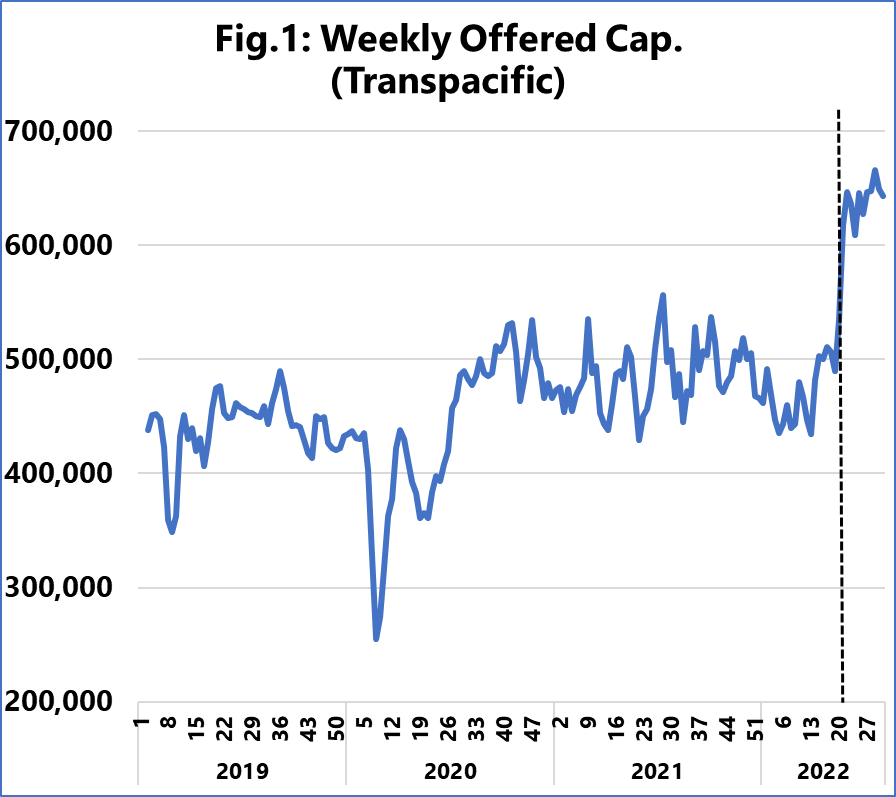Everyone seems to be focused on the container market balance.
On the one hand, we have the drop in demand due to the Chinese lockdown and the resultant blank sailings and on the other hand the injection of new services in the last year and the growing capacity during the peak period, which is recorded historically in the third quarter of each year.
This is compounded by port congestion and its effects, as well as the fear of negotiating union agreements with the International Longshore and Warehouse Union (ILWU) in the United States.
This situation makes an early peak season even more likely for importers, as they try to start early so as not to overcrowd their orders with the rest, according to the Danish maritime data analysis company, Sea-Intelligence.
Evidence of this can be seen mainly in Transpacific, according to the company.
As we can see in the following figure, there is a sharp increase in offered capacity in the coming 12 weeks (weeks 20-31), with week 22 seemingly the magic number in terms of an increase. We see offered capacity increasing from 535,200 TEU in week 20 to 646,500 TEU in week 22. Capacity is slated to stay at that level all the way to week 31.

If we look at capacity growth individually on the two Transpacific trade lanes, based on current vessel deployment, Asia-North America West Coast will see weekly capacity grow by a little over 10% in each of the upcoming 12 weeks when annualised over the respective weeks in 2019. This is a consistent level of growth in line with the growth seen during the peak season in 2021.
On Asia-North America East Coast, capacity growth when annualised over 2019 is slated to be 11-17% in the upcoming 12 weeks, which is stronger than on Asia-NAWC, but with a more gradual increase than on Asia-NAWC, reports Sea-Intelligence.
A lot of this capacity growth on Asia-NAWC is attributed to non-alliance carriers, as they are recording capacity growth of 20-35% in the coming 12 weeks, whereas the alliance carriers are only recording a growth of 0-6% in the same period when annualised over 2019.
On Asia-Europe, however, the increase in offered capacity in week 22 brings offered capacity in line with the peak season in 2021, with another increase in week 29 bringing the weekly offered capacity over the 500,000 TEU mark, higher than in any week in the 2019-2022 period, concludes the data analysis company.







